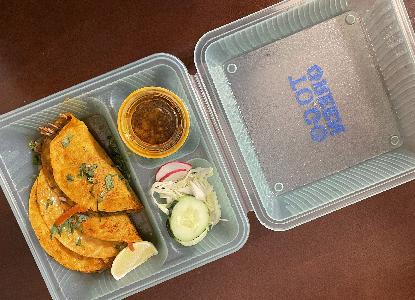The world’s largest research, museum and education network houses more than 150 million collections across its 21 museums, the National Zoo and eight research centers. That can get overwhelming, even for major history buffs.
Now, the renowned Smithsonian Institution, along with a major cloud computing company, aims to make these paintings, fossils and ancient objects easier to access.
The cloud-based software giant Salesforce is working with Smithsonian to develop a system to bring together different data from various sources — like ticketing systems and donation history — to improve the user experience, according to Lori Freeman, Salesforce’s vice president and general manager of nonprofit industry solutions and strategy. The ultimate goal is to create a more clear blueprint of the many Smithsonian locations and their offerings, she said.
“Smithsonian is so progressive. They have all this content, they have all this history, they have incredible tools,” Freeman told Technical.ly. “So this technology is going to enable them to reach audiences they would never get to.”
For example, museum employees and volunteers will be able to help visitors find certain exhibits at other locations. A user visiting the Hirshhorn can ask someone at the information desk if a certain piece of art is at the National Museum of American History, explained Becky Kobberod, the Smithsonian’s head of digital transformation.
“It’s connecting the dots and creating a Smithsonian ecosystem that we currently don’t have. If you want to engage in our various museums, you go to each of them separately,” Kobberod said. “Whereas now, we’re providing you a front door, so to speak, that can help you navigate across all of the many different museums and resources that we have.”
Salesforce and Smithsonian did not share specifics about what the technology itself will look like or provide any further information about how it will appear on the user end. However, Freeman cited keeping visitors engaged and building lifelong relationships with both in-person and virtual visitors as primary goals.
Building on current tech resources
The institution’s Open Access initiative currently houses 2D and 3D renderings of collections across the museums. It launched in 2020, just weeks before the coronavirus pandemic, and currently has about 5 million renderings as well as different datasets.
For the 3D images, users can click and drag to get a 360-degree view of different fossils, sculptures and even Neil Armstrong’s spacesuit.
Uploading these to Open Access is an ongoing process, Kobberod said. When the platform launched in 2020, 2.8 million pieces were uploaded.
This isn’t the Smithsonian’s only initiative to make more content available online. In 2022, the National Museum of African American History and Culture launched its own searchable platform, which was developed in collaboration with Baltimore-based digital services firm Fearless, to offer certain collections and stories online.
Only about 1% of collections are on physical display at any given time, she noted, which is why she’s focused on digitizing collections and uploading them to Open Access. It also allows for people who wouldn’t otherwise have access to the means to see these pieces of history, Kobberod said, which she’s particularly proud of.
“Smithsonian exists as a service to all of the American public,” she said. “We know that this is core to our future, and to making what we have available to the nation and the world.”
This article mentions Fearless, a Technical.ly client. That relationship had no impact on this report.
Before you go...
Please consider supporting Technical.ly to keep our independent journalism strong. Unlike most business-focused media outlets, we don’t have a paywall. Instead, we count on your personal and organizational support.
Join our growing Slack community
Join 5,000 tech professionals and entrepreneurs in our community Slack today!






